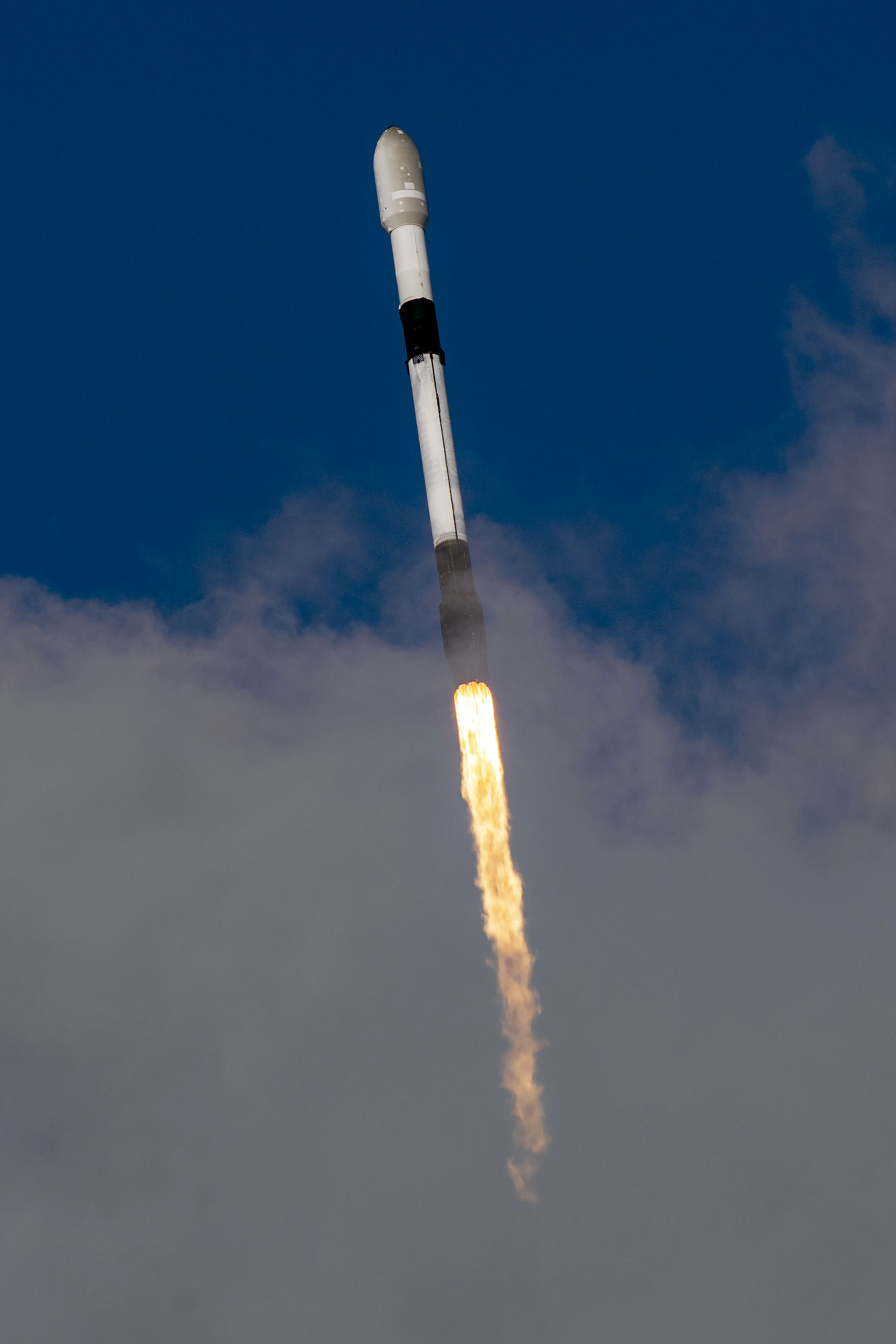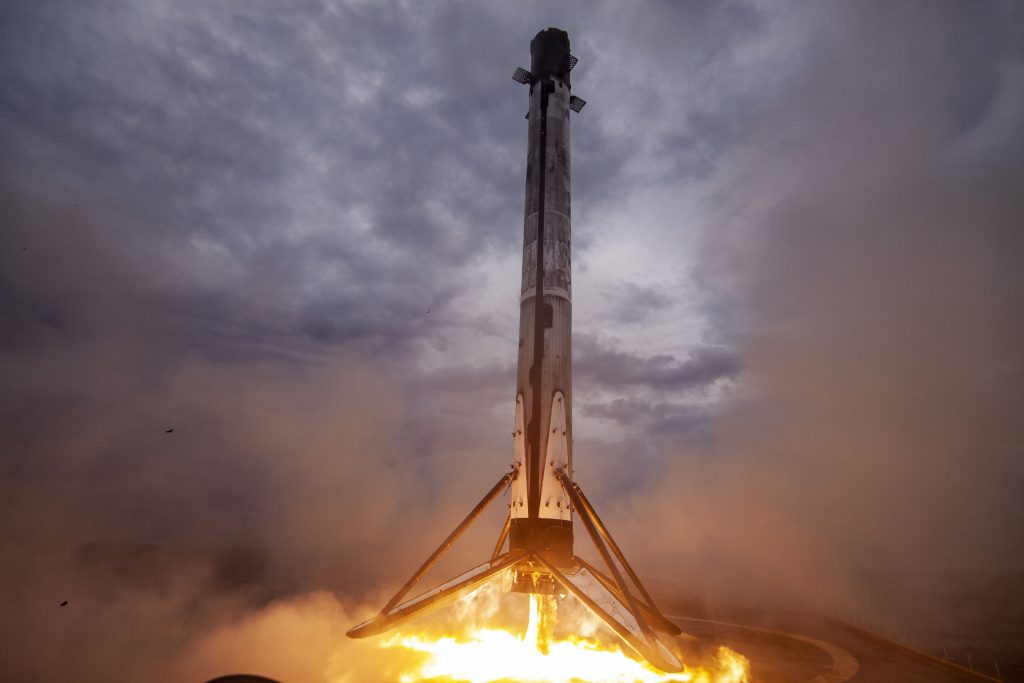Featured Image: SpaceX
Lift Off Time | January 3rd, 2024 – 20:46 UTC | 15:46 EDT |
|---|---|
Mission Name | Ovzon-3 |
Launch Provider | SpaceX |
Customer | Ovzon |
Rocket | Falcon 9 Block 5 Booster TBD |
Launch Location | Space Launch Complex 40 (SLC-40), Cape Canaveral SFS, Florida, USA |
Payload mass | ~ 1,800 kg (3,968 lb) |
Where is the spacecraft going? | Geostationary transfer orbit |
Will they be attempting to recover the first stage? | Yes |
Where will the first stage land? | Landing Zone 1 |
Will they be attempting to recover the fairings? | Yes |
Are these fairings new? | The fairings are likely flight-proven |
This will be the: | – 284th Falcon 9 launch – 89th Falcon 9 mission of 2023 – 2nd launch for SpaceX in 2023 – 297th SpaceX mission – 3rd orbital launch attempt of 2024 |
Where to watch | Official livestream |
What Does All This Mean?
The Ovzon-3 mission will launch a communications satellite atop a Falcon 9 rocket. The Falcon 9 will lift off from Space Launch Complex 40 (SLC-40) at Cape Canaveral Space Force Station, in Florida.
Ovzon-3
The Ovzon 3 satellite is the first privately funded and developed Swedish geostationary satellite. It is a communications satellite which will cover 1/3 of the earth via its steerable spot beams, meeting the demand for better mobile broadband coverage in under-served regions.
Launched atop a Falcon 9 rocket from Cape Canaveral, Florida, Ovzon 3 will be taken to a geostationary transfer orbit. Once released at an apogee of 36,000 km, the satellite will use its internal electric propulsion system to gradually transition from the transfer orbit to its designated geostationary orbit position at 59.7 degrees east over a period of 3-4 months.
Ovzon 3 was initially planned to be launched in 2021, directly to geostationary orbit by a Falcon-Heavy (Block 5). However this was changed to an Ariane-5 ECA+ in August 2019, with plans to deliver the payload into a geostationary transfer orbit in early 2023. In September 2022 the plan changed again, with the launch vehicle now being the Falcon 9.
What Is Falcon 9 Block 5?
The Falcon 9 Block 5 is SpaceX’s partially reusable two-stage medium-lift launch vehicle. The vehicle consists of a reusable first stage, an expendable second stage, and, when in payload configuration, a pair of reusable fairing halves.
First Stage
The Falcon 9 first stage contains nine Merlin 1D+ sea-level engines. Each engine uses an open gas generator cycle and runs on RP-1 and liquid oxygen (LOx). Each engine produces 845 kN of thrust at sea level, with a specific impulse (ISP) of 285 seconds, and 934 kN in a vacuum with an ISP of 313 seconds. Due to the powerful nature of the engine, and the large amount of them, the Falcon 9 first stage is able to lose an engine right off the pad, or up to two later in flight, and be able to successfully place the payload into orbit.
The Merlin engines are ignited by triethylaluminum and triethylborane (TEA-TEB), which instantaneously burst into flames when mixed in the presence of oxygen. During static fire and launch the TEA-TEB is provided by the ground service equipment. However, as the Falcon 9 first stage is able to propulsively land, three of the Merlin engines (E1, E5, and E9) contain TEA-TEB canisters to relight for the boost back, reentry, and landing burns.
Second Stage
The Falcon 9 second stage is the only expendable part of the Falcon 9. It contains a singular MVacD engine that produces 992 kN of thrust and an ISP of 348 seconds. The second stage is capable of doing several burns, allowing the Falcon 9 to put payloads in several different orbits.
For missions with many burns and/or long coasts between burns, the second stage is able to be equipped with a mission extension package. When the second stage has this package it has a grey strip, which helps keep the RP-1 warm, an increased number of composite-overwrapped pressure vessels (COPVs) for pressurization control, and additional TEA-TEB.

Falcon 9 Booster
The booster supporting the Ovzon-3 mission is TBD.
| B1081’s missions | Launch Date (UTC) | Turnaround Time (Days) |
| Crew-7 | August 26, 2023 | N/A |
| Dragon CRS-2 SpX-29 | November 10, 2023 | 76 |
Following launch, the Falcon 9 booster will conduct up to three burns. These burns aim to softly touch down the booster on Landing Zone 1.

Falcon 9 Fairings
The Falcon 9’s fairing consists of two dissimilar reusable halves. The first half (the half that faces away from the transport erector) is called the active half, and houses the pneumatics for the separation system. The other fairing half is called the passive half. As the name implies, this half plays a purely passive role in the fairing separation process, as it relies on the pneumatics from the active half.
Both fairing halves are equipped with cold gas thrusters and a parafoil which are used to softly touch down the fairing half in the ocean. SpaceX used to attempt to catch the fairing halves, however, at the end of 2020 this program was canceled due to safety risks and a low success rate.
In 2021, SpaceX started flying a new version of the Falcon 9 fairing. The new “upgraded” version has vents only at the top of each fairing half, by the gap between the halves, whereas the old version had vents placed spread equidistantly around the base of the fairing. Moving the vents decreases the chance of water getting into the fairing, making the chance of a successful scoop significantly higher.




Ovzon-3 Countdown
All times are approximate
| HR/MIN/SEC | EVENT |
|---|---|
| 00:38:00 | SpaceX Launch Director verifies go for propellant load |
| 00:35:00 | RP-1 (rocket grade kerosene) loading begins |
| 00:35:00 | 1st stage LOX (liquid oxygen) loading begins |
| 00:16:00 | 2nd stage LOX loading begins |
| 00:07:00 | Falcon 9 begins pre-launch engine chill |
| 00:05:00 | Dragon transitions to internal power |
| 00:01:00 | Command flight computer to begin final prelaunch checks |
| 00:01:00 | Propellant tanks pressurize for flight |
| 00:00:45 | SpaceX Launch Director verifies go for launch |
| 00:00:03 | Engine controller commands engine ignition sequence to start |
| 00:00:00 | Falcon 9 liftoff |
LAUNCH AND LANDING
All times are approximate
| Hr/Min/Sec | Event |
|---|---|
| 00:01:05 | Max Q (moment of peak mechanical stress on the rocket) |
| 00:02:19 | 1st stage main engine cutoff (MECO) |
| 00:02:22 | 1st and 2nd stages separate |
| 00:02:30 | 2nd stage engine starts (SES-1) |
| 00:02:35 | 1st stage boostback burn begins |
| 00:03:01 | Fairing deployment |
| 00:03:29 | 1st stage boostback burn ends |
| 00:06:13 | 1st stage entry burn begins |
| 00:06:29 | 1st stage entry burn ends |
| 00:07:22 | 1st stage landing burn begins |
| 00:07:24 | 1st stage landing |
| 00:08:31 | 2nd stage engine cutoff (SECO-1) |
| 00:50:52 | 2nd stage engine starts (SES-2) |
| 00:56:55 | 2nd stage engine cutoff (SECO-2) |




